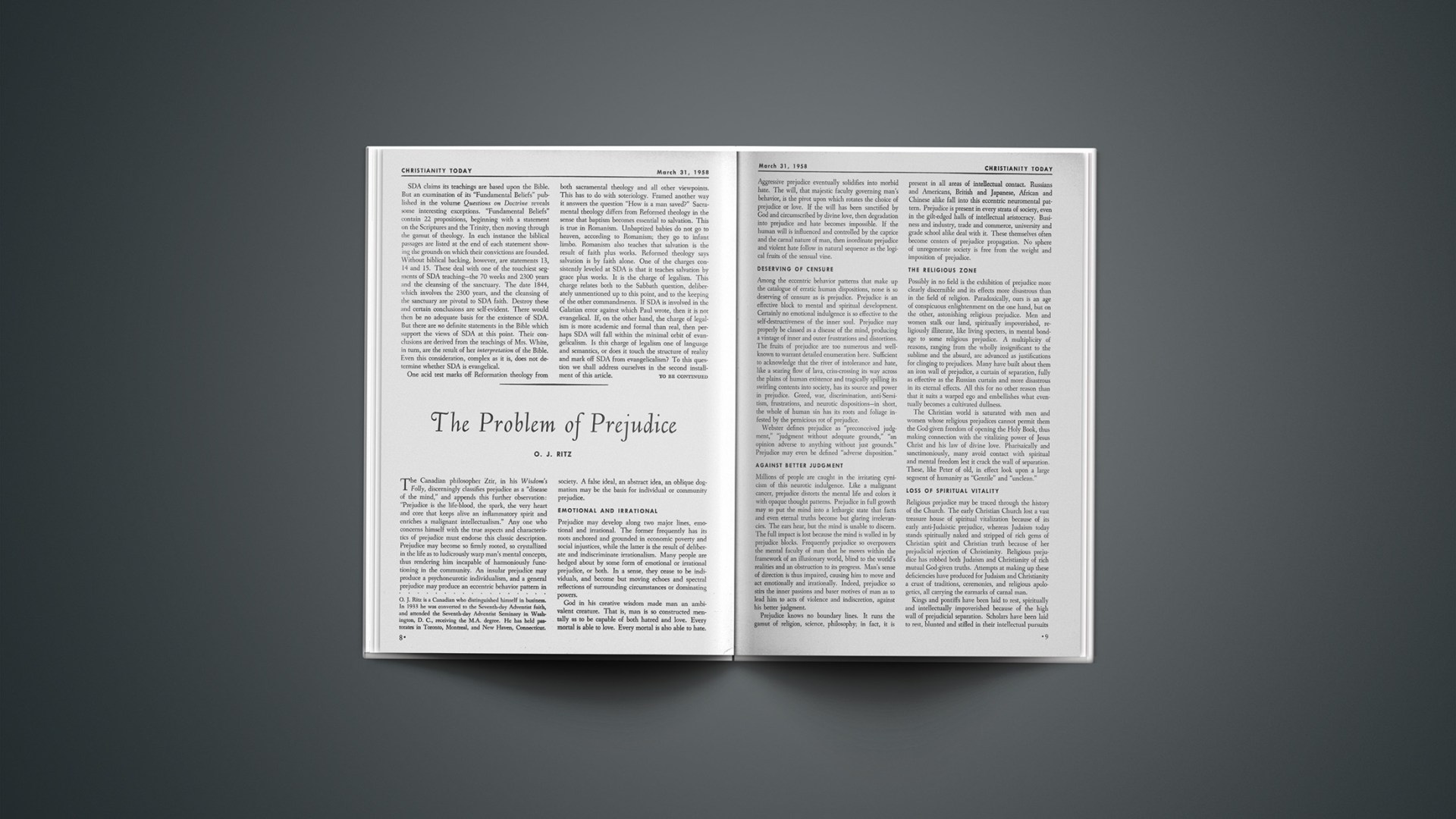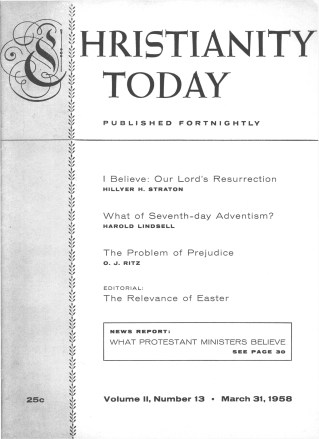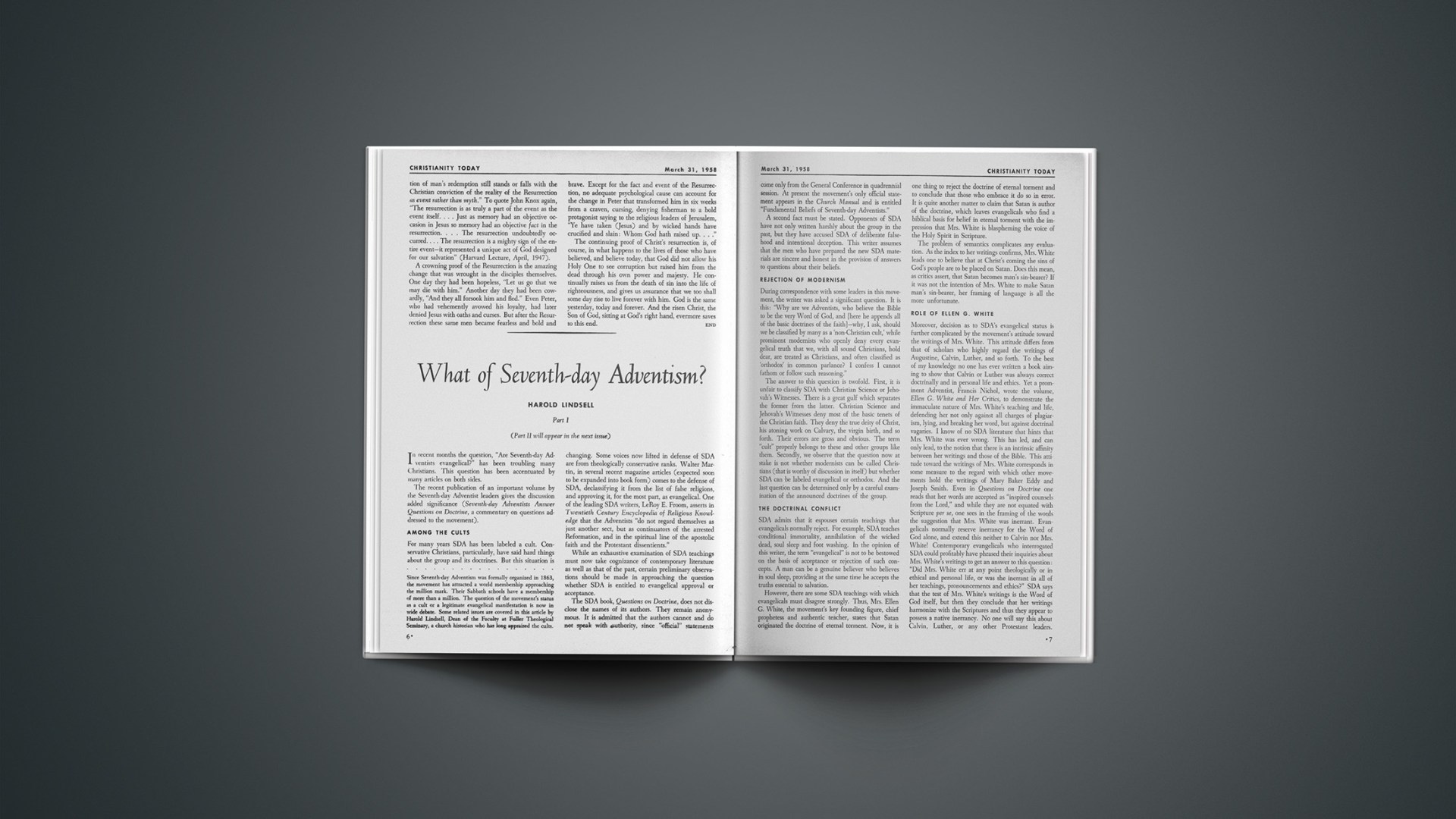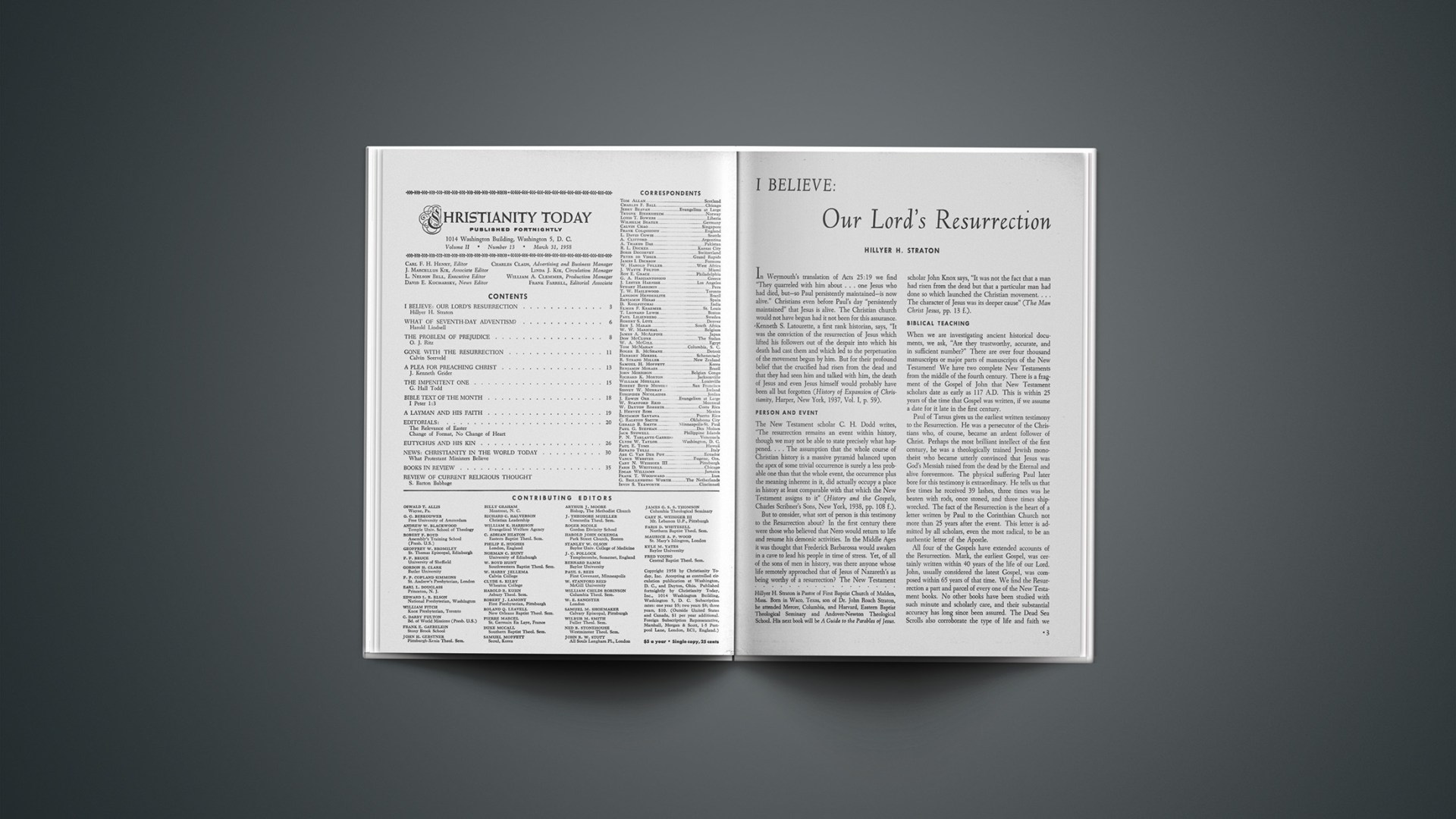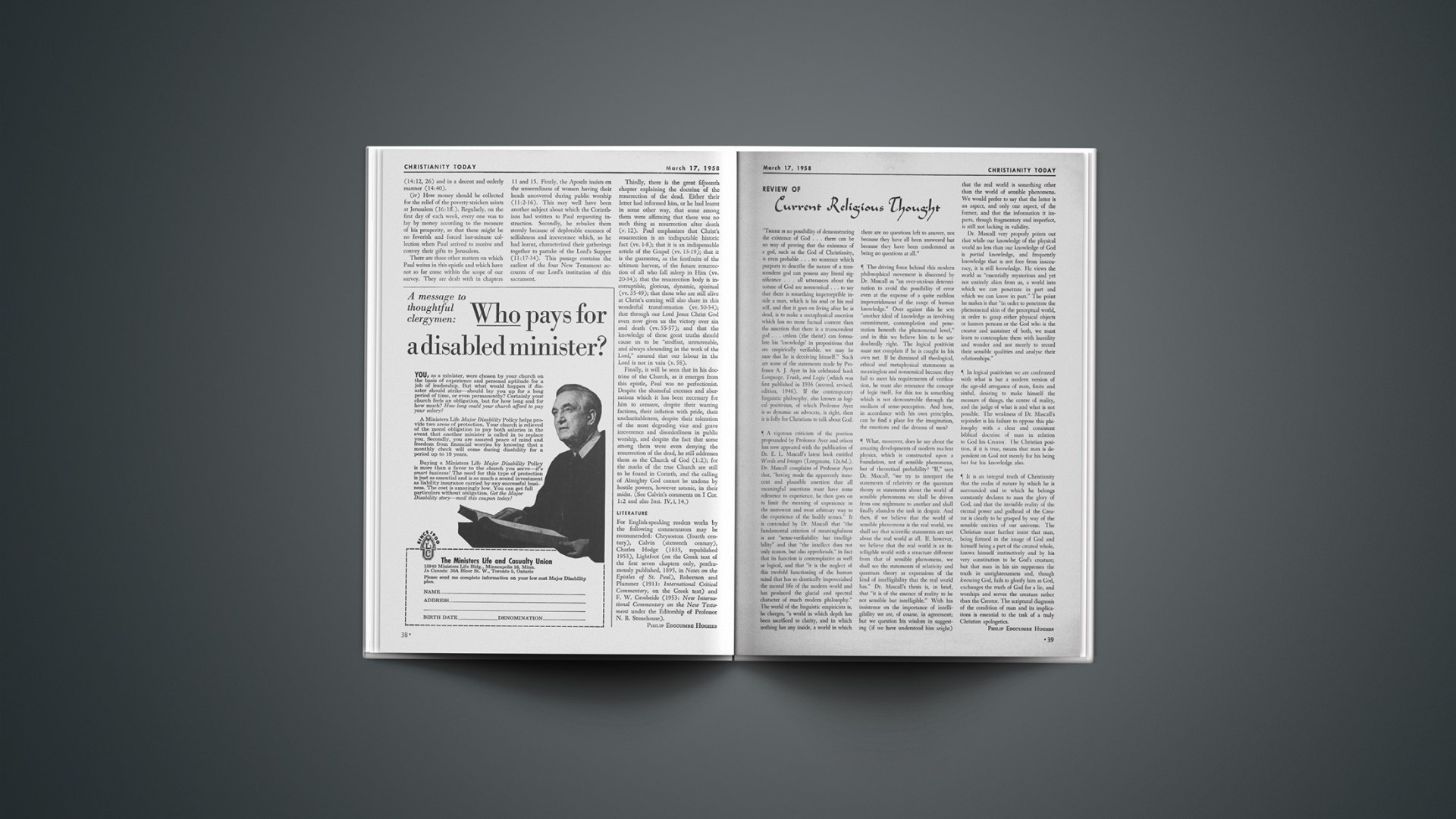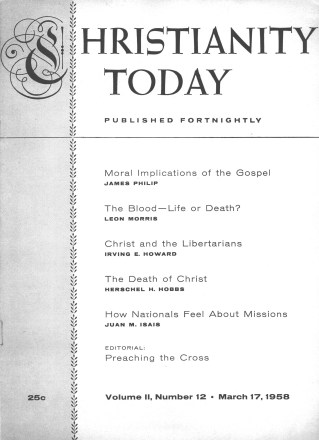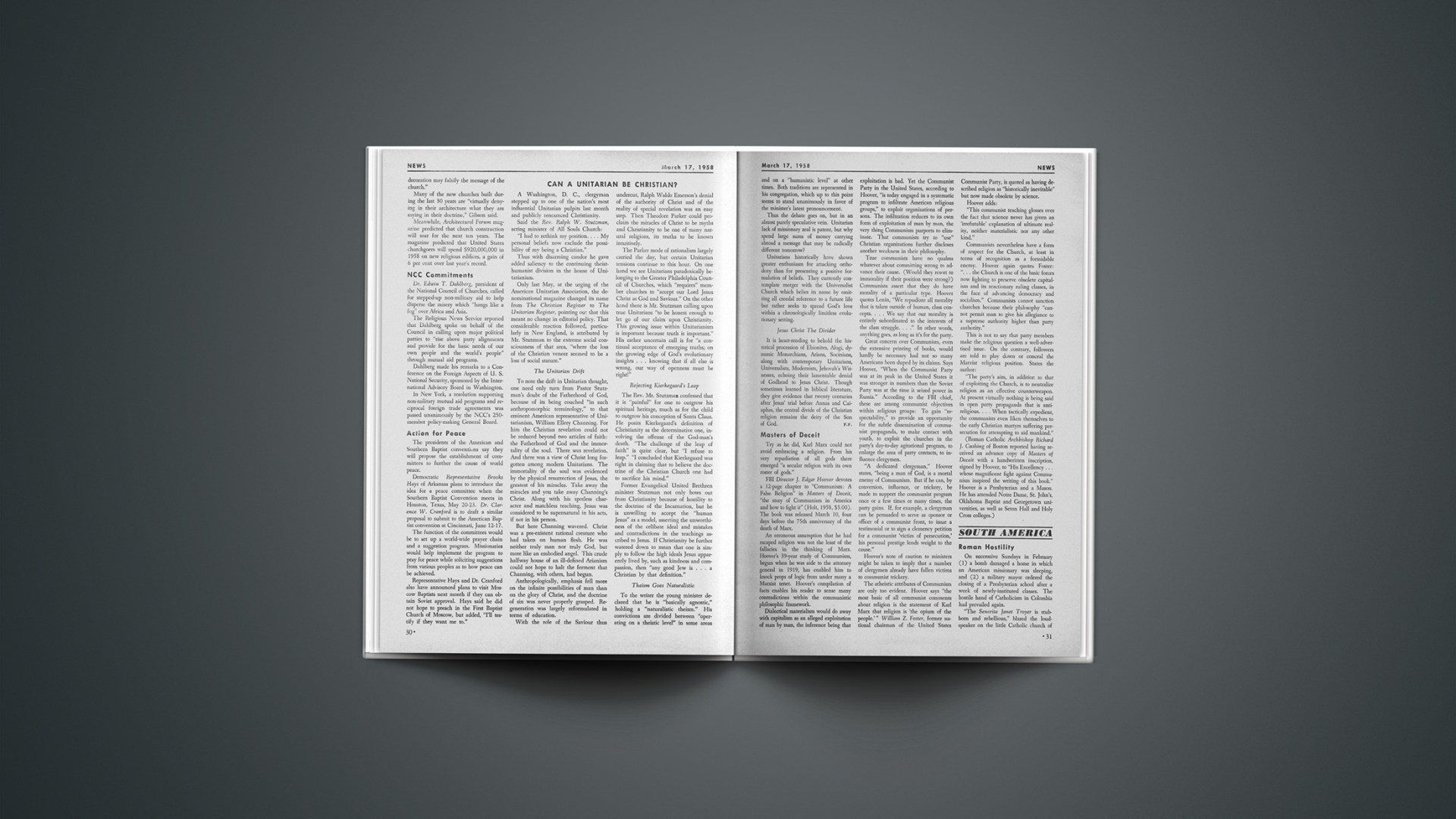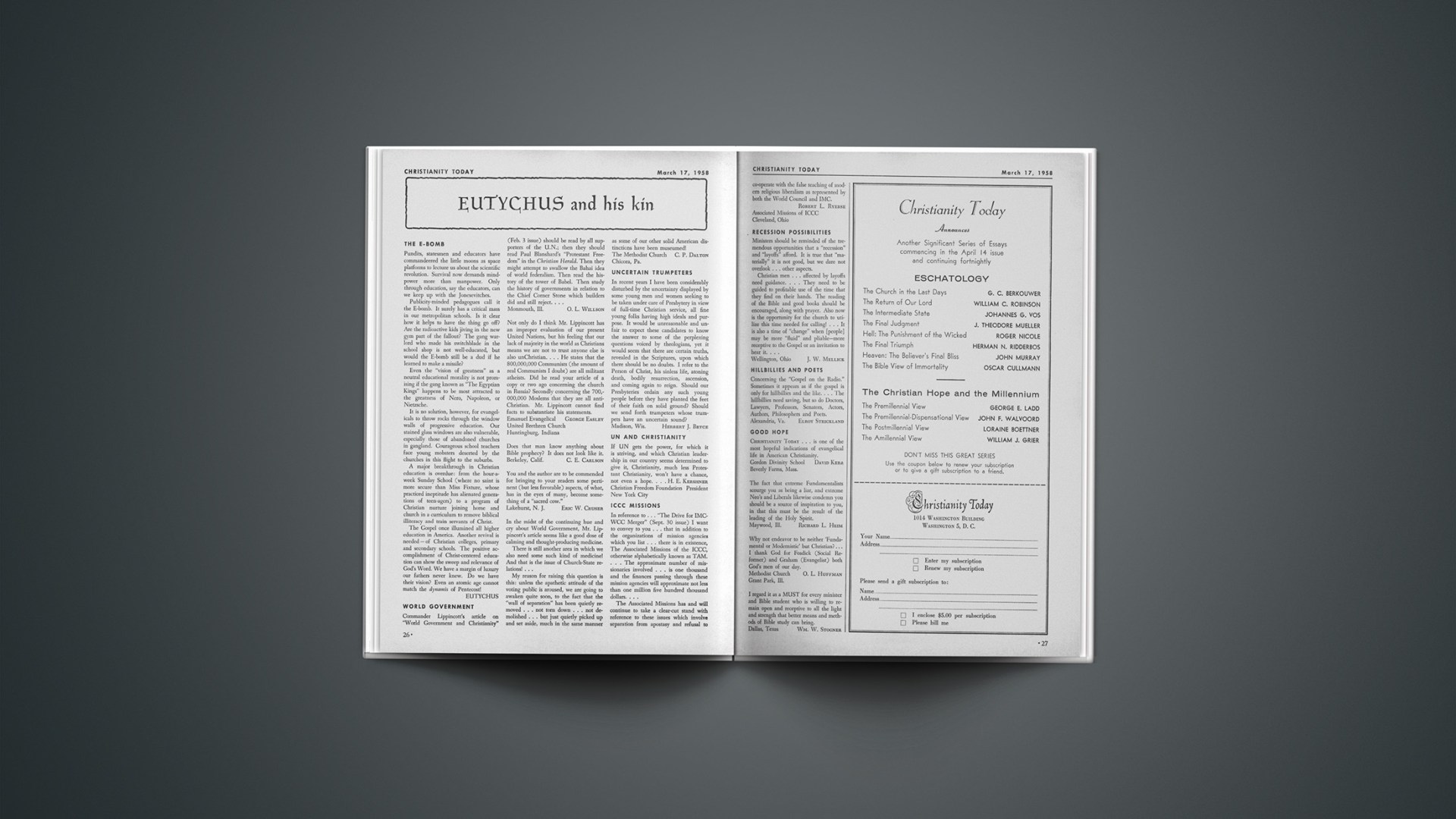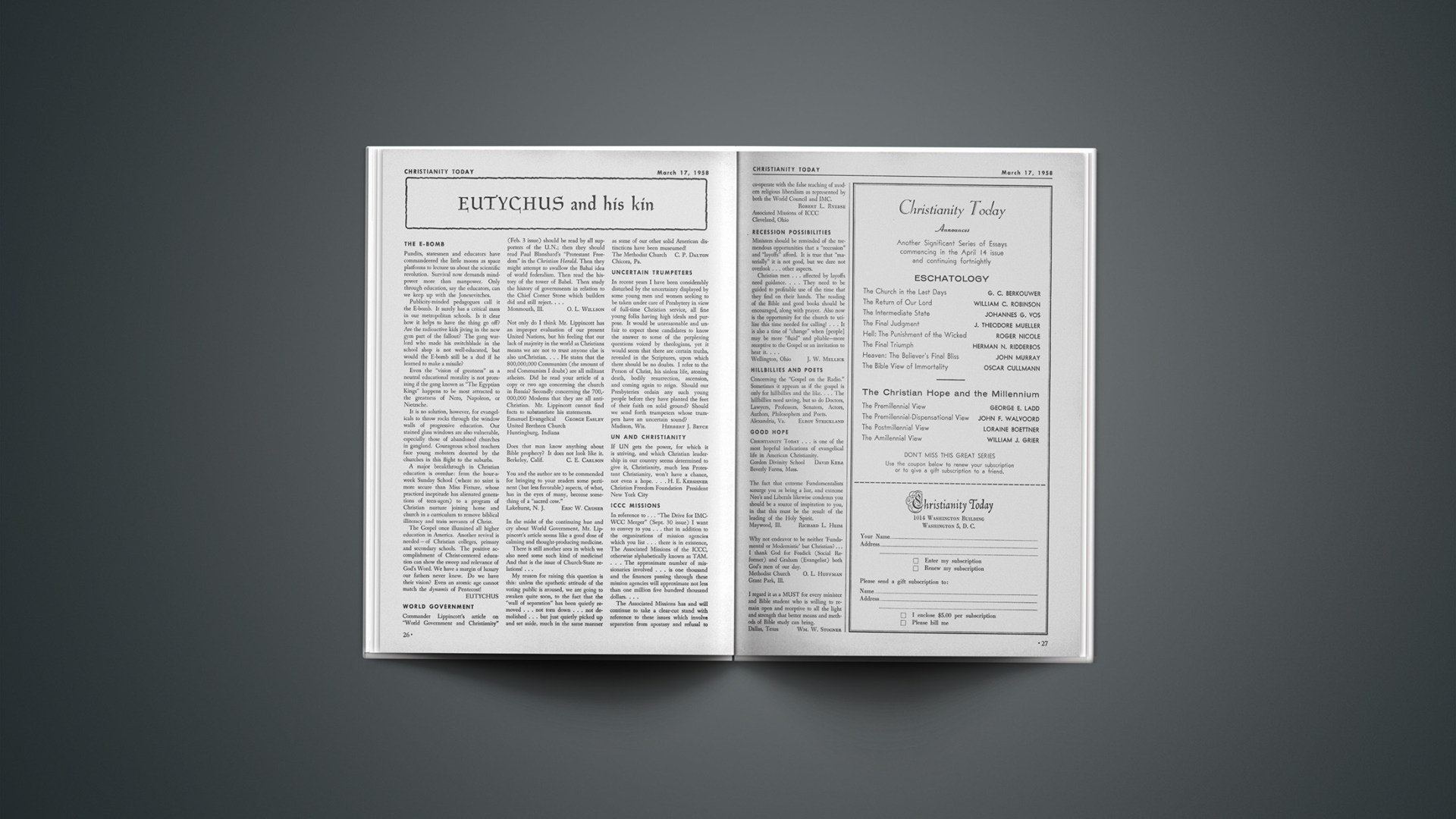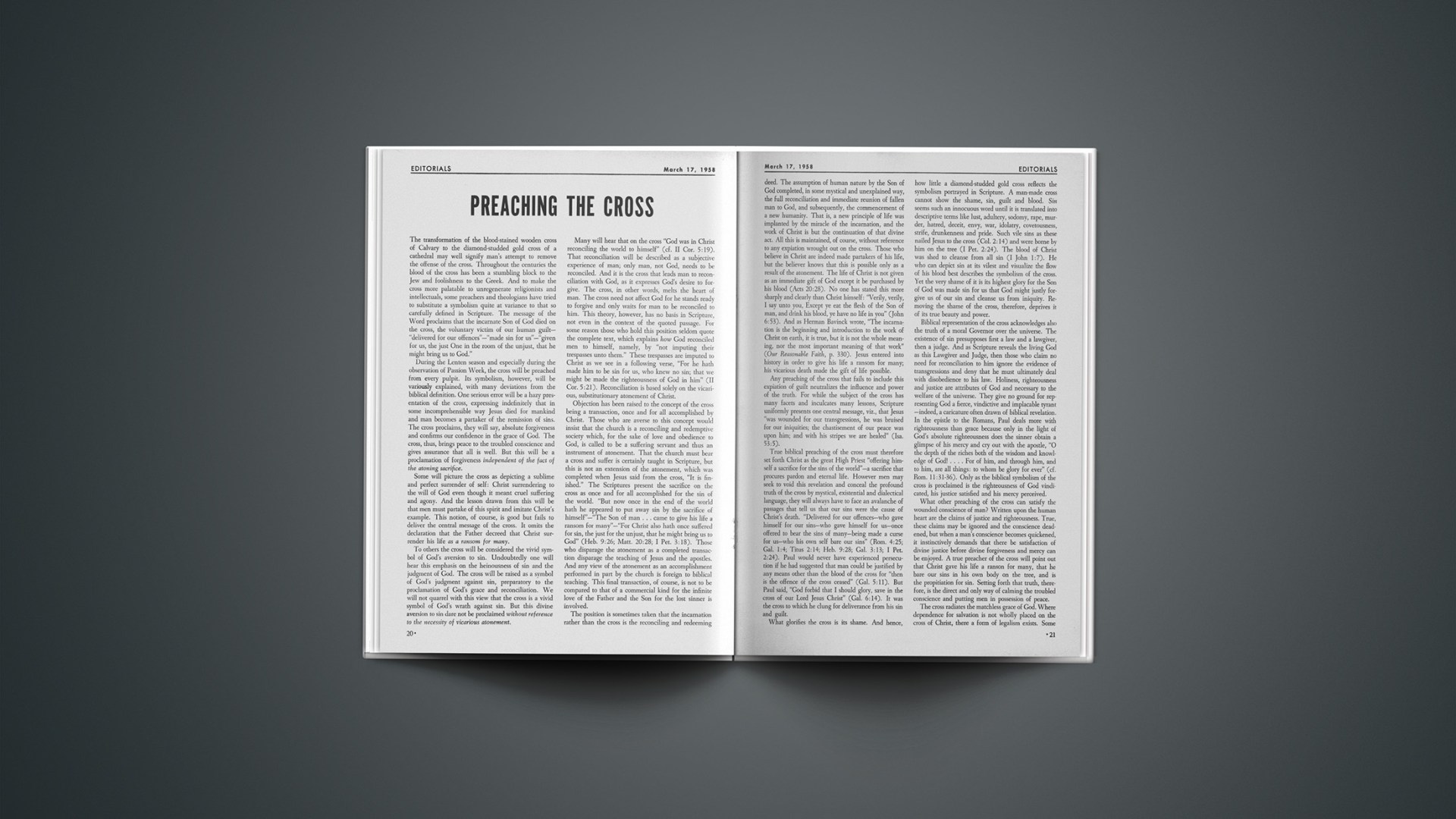The Canadian philosopher Ztir, in his Wisdom’s Folly, discerningly classifies prejudice as a “disease of the mind,” and appends this further observation: “Prejudice is the life-blood, the spark, the very heart and core that keeps alive an inflammatory spirit and enriches a malignant intellectualism.” Any one who concerns himself with the true aspects and characteristics of prejudice must endorse this classic description. Prejudice may become so firmly rooted, so crystallized in the life as to ludicrously warp man’s mental concepts, thus rendering him incapable of harmoniously functioning in the community. An insular prejudice may produce a psychoneurotic individualism, and a general prejudice may produce an eccentric behavior pattern in society. A false ideal, an abstract idea, an oblique dogmatism may be the basis for individual or community prejudice.
Emotional And Irrational
Prejudice may develop along two major lines, emotional and irrational. The former frequently has its roots anchored and grounded in economic poverty and social injustices, while the latter is the result of deliberate and indiscriminate irrationalism. Many people are hedged about by some form of emotional or irrational prejudice, or both. In a sense, they cease to be individuals, and become but moving echoes and spectral reflections of surrounding circumstances or dominating powers.
God in his creative wisdom made man an ambivalent creature. That is, man is so constructed mentally as to be capable of both hatred and love. Every mortal is able to love. Every mortal is also able to hate. Aggressive prejudice eventually solidifies into morbid hate. The will, that majestic faculty governing man’s behavior, is the pivot upon which rotates the choice of prejudice or love. If the will has been sanctified by God and circumscribed by divine love, then degradation into prejudice and hate becomes impossible. If the human will is influenced and controlled by the caprice and the carnal nature of man, then inordinate prejudice and violent hate follow in natural sequence as the logical fruits of the sensual vine.
Deserving Of Censure
Among the eccentric behavior patterns that make up the catalogue of erratic human dispositions, none is so deserving of censure as is prejudice. Prejudice is an effective block to mental and spiritual development. Certainly no emotional indulgence is so effective to the self-destructiveness of the inner soul. Prejudice may properly be classed as a disease of the mind, producing a vintage of inner and outer frustrations and distortions. The fruits of prejudice are too numerous and well-known to warrant detailed enumeration here. Sufficient to acknowledge that the river of intolerance and hate, like a searing flow of lava, criss-crossing its way across the plains of human existence and tragically spilling its swirling contents into society, has its source and power in prejudice. Greed, war, discrimination, anti-Semitism, frustrations, and neurotic dispositions—in short, the whole of human sin has its roots and foliage infested by the pernicious rot of prejudice.
Webster defines prejudice as “preconceived judgment,” “judgment without adequate grounds,” “an opinion adverse to anything without just grounds.” Prejudice may even be defined “adverse disposition.”
Against Better Judgment
Millions of people are caught in the irritating cynicism of this neurotic indulgence. Like a malignant cancer, prejudice distorts the mental life and colors it with opaque thought patterns. Prejudice in full growth may so put the mind into a lethargic state that facts and even eternal truths become but glaring irrelevancies. The ears hear, but the mind is unable to discern. The full impact is lost because the mind is walled in by prejudice blocks. Frequently prejudice so overpowers the mental faculty of man that he moves within the framework of an illusionary world, blind to the world’s realities and an obstruction to its progress. Man’s sense of direction is thus impaired, causing him to move and act emotionally and irrationally. Indeed, prejudice so stirs the inner passions and baser motives of man as to lead him to acts of violence and indiscretion, against his better judgment.
Prejudice knows no boundary lines. It runs the gamut of religion, science, philosophy; in fact, it is present in all areas of intellectual contact. Russians and Americans, British and Japanese, African and Chinese alike fall into this eccentric neuromental pattern. Prejudice is present in every strata of society, even in the gilt-edged halls of intellectual aristocracy. Business and industry, trade and commerce, university and grade school alike deal with it. These themselves often become centers of prejudice propagation. No sphere of unregenerate society is free from the weight and imposition of prejudice.
The Religious Zone
Possibly in no field is the exhibition of prejudice more clearly discernible and its effects more disastrous than in the field of religion. Paradoxically, ours is an age of conspicuous enlightenment on the one hand, but on the other, astonishing religious prejudice. Men and women stalk our land, spiritually impoverished, religiously illiterate, like living specters, in mental bondage to some religious prejudice. A multiplicity of reasons, ranging from the wholly insignificant to the sublime and the absurd, are advanced as justifications for clinging to prejudices. Many have built about them an iron wall of prejudice, a curtain of separation, fully as effective as the Russian curtain and more disastrous in its eternal effects. All this for no other reason than that it suits a warped ego and embellishes what eventually becomes a cultivated dullness.
The Christian world is saturated with men and women whose religious prejudices cannot permit them the God-given freedom of opening the Holy Book, thus making connection with the vitalizing power of Jesus Christ and his law of divine love. Pharisaically and sanctimoniously, many avoid contact with spiritual and mental freedom lest it crack the wall of separation. These, like Peter of old, in effect look upon a large segment of humanity as “Gentile” and “unclean.”
Loss Of Spiritual Vitality
Religious prejudice may be traced through the history of the Church. The early Christian Church lost a vast treasure house of spiritual vitalization because of its early anti-Judaistic prejudice, whereas Judaism today stands spiritually naked and stripped of rich gems of Christian spirit and Christian truth because of her prejudicial rejection of Christianity. Religious prejudice has robbed both Judaism and Christianity of rich mutual God-given truths. Attempts at making up these deficiencies have produced for Judaism and Christianity a crust of traditions, ceremonies, and religious apologetics, all carrying the earmarks of carnal man.
Kings and pontiffs have been laid to rest, spiritually and intellectually impoverished because of the high wall of prejudicial separation. Scholars have been laid to rest, blunted and stifled in their intellectual pursuits because prejudice separated them from great wells of spiritual and intellectual depths. Men and women through long centuries have been leveled to the dust, seeking ways and means to circumvent organized prejudice. The annals of mankind are replete with the records of multitudes who have groped along the avenues of life, as it were, living a blind life within the brain, inwardly strangled in spirit, because of religious prejudice. Only eternity will reveal the horror of human dullness, self-inflicted, with which the human race has contended because of prejudice. Certain it is that the master deceiver, Satan, has no more effective weapon against enlightenment and spiritual progress than the thick walls of prejudice. Religious prejudice, like a huge iron gate, must be unlocked from within.
Race Prejudice Is Ugly
Another area of human contact that provides a rich source of morbid pleasure is the area of race prejudice. Race prejudice is as old as the human race. There never has been a time in which mankind was not guilty of some form of race discrimination and color prejudice. Thus the ancient Egyptians looked upon their contemporary nations as inferior and worthy only of cruel subjugation. The haughty Greeks, puffed up with their intellectual greatness, goaded by their scholastic genius, looked upon all contemporary peoples through the eye of prejudice, and saw their surrounding nations only as rude and barbarous. The Romans looked upon all other nations with contempt and disdain, worthy only of annihilation. It was a day of supernationalism, a time of Roman ego. It was a time of prejudiced racism. So severe were the implications of race and society prejudice that millions of their fellow Roman citizens never rose above the level of animalism, sold and bartered in the public auctions.
A Continuing Evil
Race prejudice has not lost its appeal through the centuries. Champions of race prejudice, super-racism, Aryanism, Nietzscheism, survival of the fittest, abound to this day. The nations of the world fought a bloody war to eliminate two major twentieth-century champions of super-racism. The one sought to build up a Gothic-German empire. In his prejudiced drive for a super race, Hitler determined to stock his “new earth” with only the “select.” And Mussolini, a beguiled and prejudiced Caesar, was, at the hour of his death, permitted to see the world “right side up” from his “upside down” view. Neither Hitler nor Mussolini rose above race prejudice.
Race prejudice has produced violent wars, insurrections, civil and religious crusades, tragedies and horrors almost beyond human grasp and human description. Thus the Roman emperors with fiendish glee watched the slaughter of men, women, and children in gladiatorial contests in the old Roman Coliseum. The stench of the dead and dying frequently made the huge stadium unfit for use for weeks. In contemporary history we have seen the same unbalanced mentality at work building up a super race by annihilating millions in the ghettos and gas chambers of Europe. Race prejudice is fundamentally a question of distorted nationalism, embellished with specious arguments. Can a genuine Christian be a hater of any race?
Prejudice And Human Dignity
Prejudice is degeneracy. Even one hundred years ago the world could not afford the eccentric pleasure of religious and race prejudice, much less today. Through trade, commerce, international thinking and living, the human race has moved into such close confines that religious and race prejudice is suicide and global catastrophy. Arab and Jew, Russian and German, Japanese and American, white and colored should seek the adoption of every conciliatory spirit to make not merely co-existence possible, but co-living a reality. Fifty years ago leaders in a big world could afford to act like little men, but today’s hour of international close proximity calls for big men in a small world.
Prejudice, like a many-membered octopus, is today strangling and laying waste. Prejudice is silently alive, lurking in full strength. In the totality of its effect upon the human race, prejudice is more devastating than either the A-bomb or the H-bomb. Communism, political and religious totalitarianism, inordinate nationalism, all have their roots and source in prejudice. Prejudice, like carbon monoxide, stifles from within.
Dying With One’S Biases
Millions have died within the cloistered walls and cells of prejudice. These have drawn the curtain of narrowness about them and suffocated. Great attempts have been made through the centuries, by force, legislation, dogmatics, to eradicate prejudice and hatred from the human neurotic dispositions … yet none of these avenues of human guidance have been as successful in the unshackling of men’s minds as has been the simple action of Christ’s love upon the soul and mind. The mind, the citadel of human rationalism, can be gloriously enriched with the crowning joys of Christian culture, love, peace, kindness and brotherhood, so that prejudice will find no soil for root or propagation.
The dignity of man must be preserved, but it can be preserved only by the recognition of the true value of the human soul. A look at Jesus Christ, our Lord in all his beauty and simplicity, his character adorned with the characteristics of love and graciousness, the absence of emotional and irrational prejudices—can by contrast reflect man’s shortcomings and sinfulness.
O. J. Ritz is a Canadian who distinguished himself in business. In 1933 he was converted to the Seventh-day Adventist faith, and attended the Seventh-day Adventist Seminary in Washington, D. C., receiving the M.A. degree. He has held pastorates in Toronto, Montreal, and New Haven, Connecticut.

